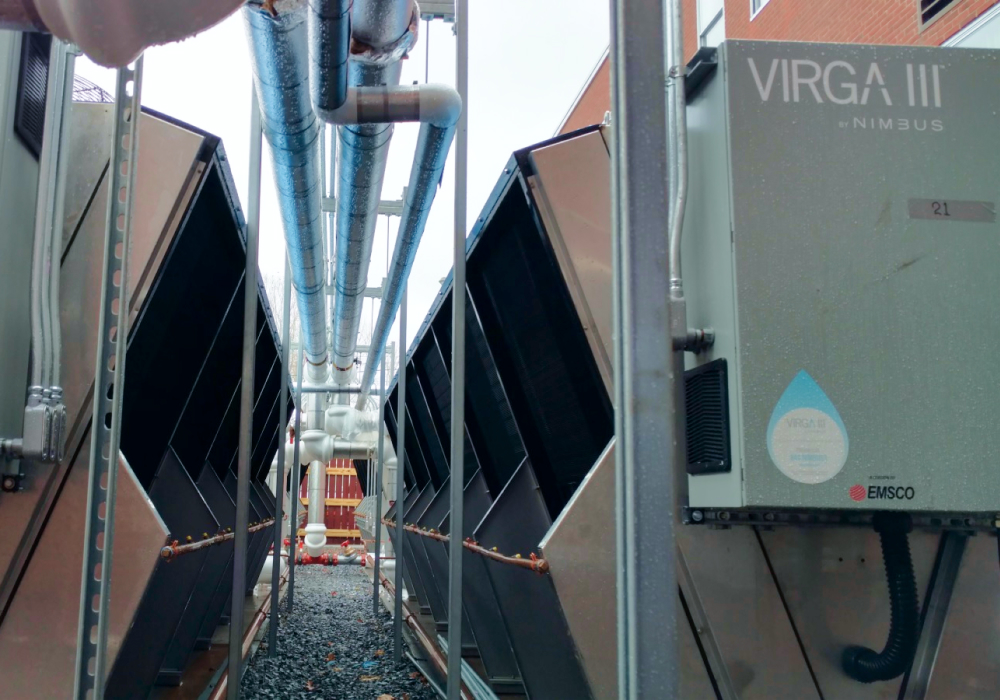The increasing demand for data access, storage, and consumption is driving the need for more and larger data centers, some as large as 500,000 square feet. To meet these demands, advanced, reliable, and cost-efficient cooling systems are essential, not only to support the rapid construction of expansive data center campuses and the expansion of existing facilities but also to ensure the mission-critical nature of the data center industry is upheld.
Cooling accounts for up to 20 percent of a data center’s energy consumption and—if the data center uses water in its cooling process—up to 95 percent of its water consumption. To help reduce energy and water consumption, data center engineers work to identify different cooling techniques and technologies to reduce the power and water consumption, such as increasing the air temperature inside the data center (sometimes beyond the ASHRAE-recommended 80.6°F supply air temperature), using more efficient servers, and using innovative cooling solutions.
Traditional evaporative cooling systems (closed cooling towers, direct and indirect evaporative cooling air handling units (AHUs)) typically consume less energy than traditional dry cooling systems at the cost of adding water consumption. Due to continued growth, the application of evaporative cooling in data centers has rapidly increased, and large data center campuses, such as Amazon, Facebook, and Google, have come to rely on evaporative cooling solutions.
However, with fresh water shortages plaguing much of the United States, the overall reduction of water consumption is a major initiative for data centers and other facilities. As a result, building and business owners are in the position of needing cooling systems capable of handling increasing heat loads, while consuming as little water as possible.
NIMBUS Advanced Process Cooling set out to help businesses BE BLUE by developing a cooling solution to overcome two of the largest challenges presented by traditional evaporative cooling towers–water consumption and the growth and spread of Legionella bacteria–without significantly increasing energy consumption.
From its research, development, and manufacturing facility in Alabama, U.S.A., the NIMBUS engineering team designed and developed its VIRGA™ Hybrid Adiabatic Cooling Systems to deliver an efficient process fluid (water, water-glycol mix, or other approved fluid as specified by NIMBUS) cooling solution.
The majority of the time VIRGA systems operate in dry mode (operating on the same principle as a traditional dry cooler would). However, on the hottest days of the year, when process fluid temperatures cannot be reached with ambient air alone, a fine water spray is activated to precool the air as it enters the cooling system. This direct hybrid approach reduces water consumption by up to 95 percent when compared to traditional open cooling towers, and up to 70 percent compared to hybrid fluid coolers reliant on conventional evaporative media pads to meet heat rejection requirements.
As an example: when operating in wet mode, a six-fan VIRGA X3 system (approximately 99”W x 105”H x 350”L) can provide up to 500 tons of cooling (depending on operating conditions) while consuming less than six gallons per minute (GPM) of water. By contrast, a media- type evaporative fluid cooling system sized for the same application can consume over 20 GPM of water.
VIRGA hybrid adiabatic systems may be connected directly to cold plates or coolant distribution units (CDU) for liquid cooling and/or high density cooling. VIRGA systems may also be connected to fan coil units to deliver the required heat rejection, while minimizing water and energy consumption for your facility.


